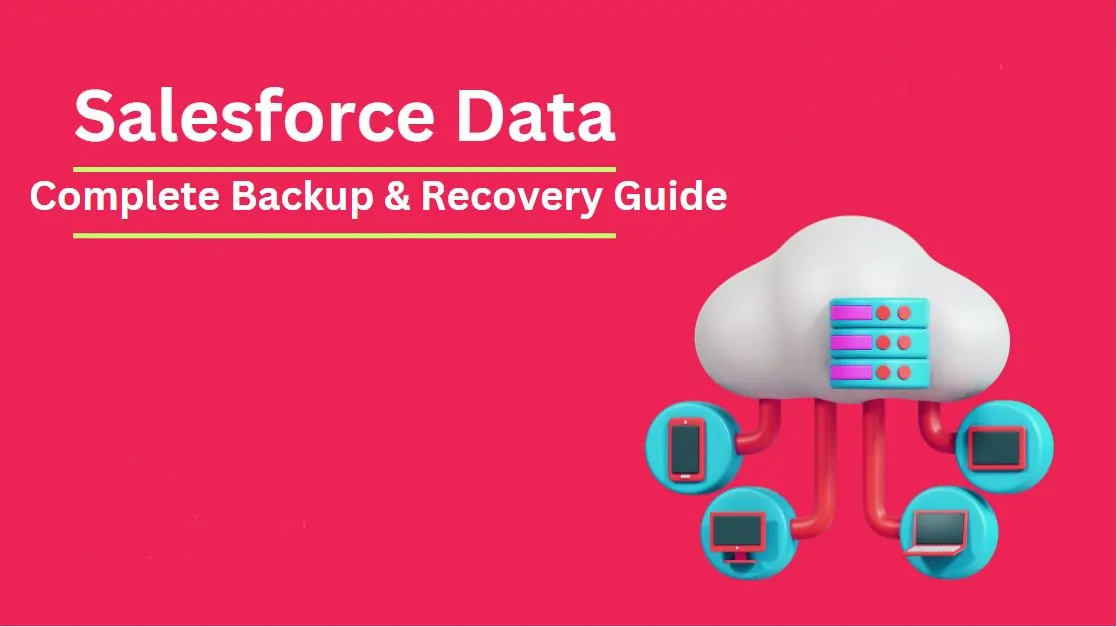In the fast-paced world of business, data is a critical asset that fuels operations, decision-making, and growth. Salesforce, as a leading customer relationship management (CRM) platform, plays a pivotal role in managing and storing valuable business information. However, ensuring the security and availability of this data is paramount. This article will delve into the intricacies of Salesforce backup and restore processes, emphasizing their importance in safeguarding data and facilitating business continuity.
Importance of Salesforce Backup:
1. Data as the Lifeblood of Business:
In today’s digital landscape, organizations heavily rely on data to drive strategic initiatives, enhance customer experiences, and streamline internal processes. Salesforce, being a central repository for customer information, transaction records, and communication history, holds a wealth of critical data that must be protected against various threats.
2. The Risks of Data Loss:
Data loss can occur due to various reasons, including accidental deletions, system failures, malicious attacks, or even unforeseen disasters. Losing valuable Salesforce data can have severe consequences, leading to operational disruptions, financial losses, and damage to a company’s reputation.
3. Compliance and Regulatory Requirements:
Many industries are subject to strict regulatory frameworks that mandate the protection and retention of sensitive information. Salesforce backup is crucial for compliance with regulations such as GDPR, HIPAA, and others, ensuring that organizations meet legal obligations regarding data privacy and security.
Components of Salesforce Backup:
1. Data Backup Strategies:
Salesforce provides several tools and options for data backup. Administrators can use weekly export backups, which are downloadable files containing a snapshot of the data, or take advantage of Salesforce’s Data Export service for automated backups. Additionally, third-party backup solutions offer advanced features like incremental backups, ensuring that only changed data is backed up, reducing storage costs and processing time.
2. Metadata Backup:
In Salesforce, metadata includes information about the structure of an organization’s data, such as custom objects, fields, workflows, and more. Metadata backup is crucial for preserving the configuration and customization of the Salesforce instance. Tools like Salesforce’s Metadata API or third-party solutions facilitate the backup of metadata, ensuring a complete restoration of the Salesforce environment.
Salesforce Restore: Navigating Data Recovery Challenges:
1. Granular Data Restoration:
When data loss occurs, the ability to restore specific records or sets of records is vital. Salesforce provides point-and-click tools for administrators to restore deleted records, but for more complex scenarios, having a comprehensive backup strategy with third-party solutions becomes essential. These solutions often offer granular data restoration capabilities, enabling organizations to recover precisely what is needed.
2. Ensuring Business Continuity:
A key objective of Salesforce restore processes is to minimize downtime and ensure business continuity. Organizations need to have a well-defined recovery plan in place, outlining the steps and resources required to restore Salesforce data swiftly. This includes having a clear communication plan to keep stakeholders informed during the restoration process.
Best Practices for Salesforce Backup and Restore:
1. Regularly Scheduled Backups:
Consistency is key when it comes to Salesforce backup. Implementing a regular backup schedule, whether daily or weekly, ensures that the most up-to-date information is safeguarded. Automated backup solutions streamline this process, reducing the burden on administrators and minimizing the risk of human error.
2. Test Restorations:
Regularly testing the restoration process is crucial for validating the effectiveness of the backup strategy. This practice helps identify potential issues and ensures that organizations can recover their data quickly and accurately in real-world scenarios. A well-executed test restoration also aids in training personnel on the recovery procedures.
3. Secure Storage and Encryption:
Protecting backup data is as important as safeguarding the live Salesforce instance. Storing backups in secure, offsite locations and encrypting sensitive information mitigates the risk of unauthorized access. Salesforce supports encryption both at rest and in transit, and organizations should extend these security measures to their backup processes.
Third-Party Salesforce Backup Solutions:
1. Advantages of Third-Party Solutions:
While Salesforce offers native tools for backup and recovery, third-party solutions bring additional features and flexibility to the table. These solutions often provide automated, incremental backups, faster recovery times, and enhanced customization options. Evaluating the specific needs of an organization and choosing a solution that aligns with those requirements is crucial for optimizing the Salesforce backup and restore process.
2. Considerations When Choosing a Solution:
When selecting a third-party backup solution, organizations should consider factors such as scalability, ease of integration, support for compliance requirements, and the provider’s reputation for data security. A robust solution should seamlessly integrate with Salesforce, provide user-friendly interfaces, and offer comprehensive customer support.
Addressing Challenges and Pitfalls:
1. Data Governance and Access Controls:
Maintaining proper data governance and access controls is essential throughout the backup and restore processes. Organizations must define roles and permissions to restrict access to sensitive data, ensuring that only authorized personnel can initiate, manage, and monitor backup and restore operations.
2. Monitoring and Auditing:
Continuous monitoring and auditing of Salesforce backup processes help identify irregularities, potential security breaches, or issues with the backup strategy. Implementing robust monitoring tools and establishing audit trails contribute to a proactive approach in maintaining the integrity and security of Salesforce data.
Final Word:
ISalesforce backup and restore processes are fundamental pillars in ensuring data security, compliance, and business continuity. As organizations increasingly rely on Salesforce for their CRM needs, implementing a comprehensive backup strategy becomes imperative. Whether utilizing native Salesforce tools or third-party solutions, organizations must tailor their approach to meet their unique requirements, considering factors such as data volume, regulatory compliance, and recovery time objectives. By embracing best practices and staying informed about advancements in Salesforce backup technologies, businesses can fortify their defenses against data loss and confidently navigate the ever-evolving landscape of digital business.

